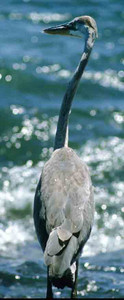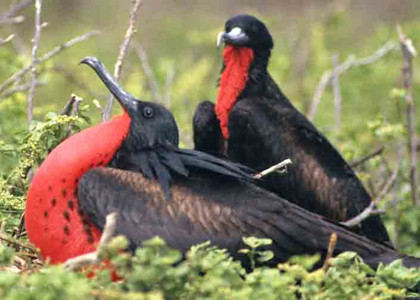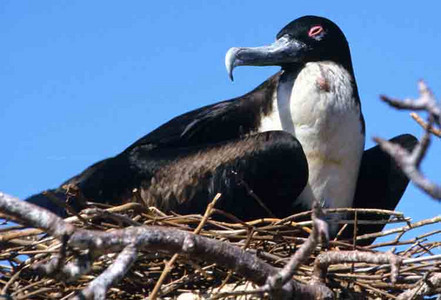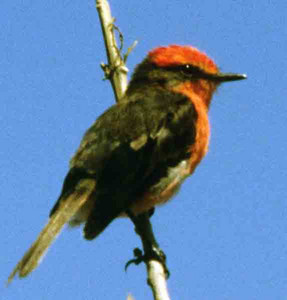
Vermillian Fly Catcher
A Vermillion Fly Catcher is a very small, but beautiful bird. This bird has the typical coloration of the male. [Galapagos Islands].
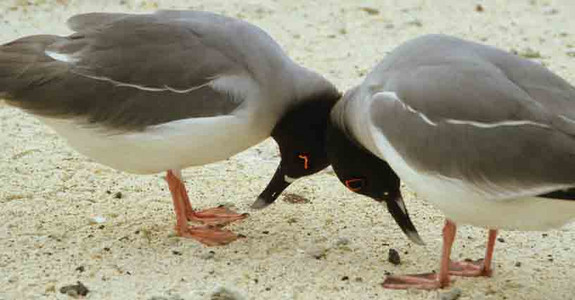
Swallowtailed Gulls
Two Swallow-Tailed Gulls touch heads in a greeting to one another. They were so tame that they walked right between my wife and myself, as we stood talking. [Galapagos Islands].
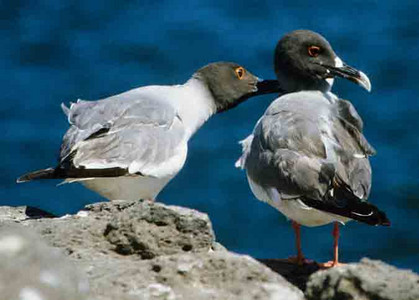
Swallowtailed Gulls
These two Swallow-Tailed Gulls looked like they were having a private conversation, but I think that the one on the left was just preening the other one. [Galapagos Islands].
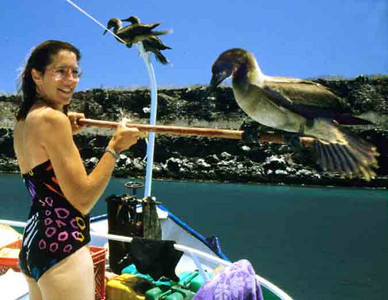
Lava Gull
One of the Lava Gulls accepted daughter Nancy's offer of a ride on a pole. [Galapagos Islands].
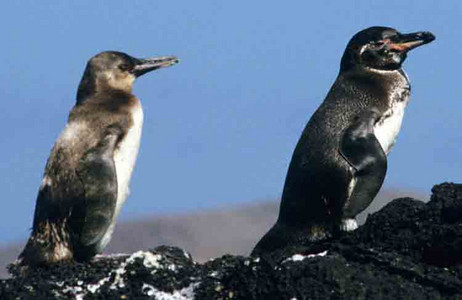
Galapagos Penguin
Galapagos Penguins are the only species of penguin on the islands. Other species might not be able to tolerate the warm temperatures. [Galapagos Islands].
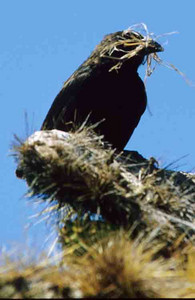
Ground Finch
The Ground Finch's diet is primarily seeds; therefore, its beak is heavier and shorter to enable it to crack the hard-shelled seeds. Note the difference in the beak between this and that of the finch of a different island, seen on a different island--next image. This is what Darwin saw and studied, and established the generally accepted thesis of "Specie-Adaptation" to environmental change. [Galapagos Islands].
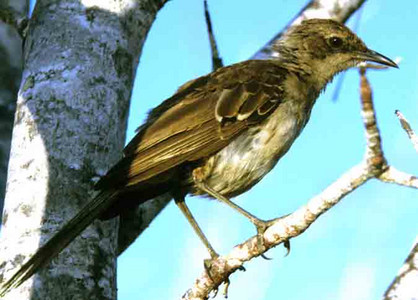
Cactus Finch
The Cactus Finch has a thinner and longer beak to facilitate its feeding on the fruit, nectar, pulp & thin-shelled seeds of the prickly-pear cactus, where the bird is required to reach down into the depths of the flower.There are 13 different species of finch on the Galapagos Islands, each species with a beak appropriately constructed to deal with the type of available food. This adaptive difference is what Darwin recognized and utilized in his theory of evolution. [Galapagos Islands].
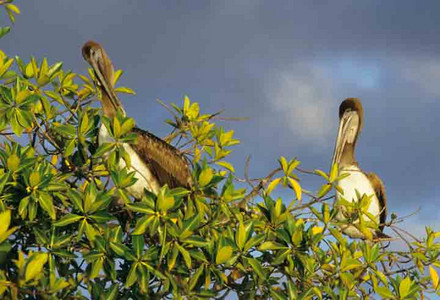
Brown Pelicans
It's early evening, and these two Brown Pelicans have gone into the mangrove to spend the night. [Galapagos Islands].
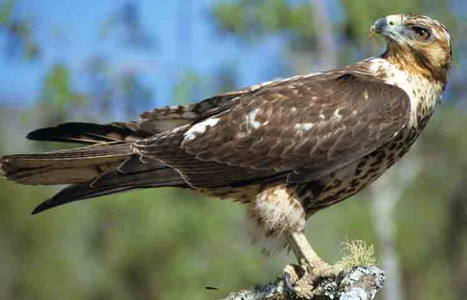
Galapagos Hawk
The Galapagos Hawk is the only species of hawk on the islands.The bird has cocked its head to locate the source of the click made by my camera's shutter. [Galapagos Islands].
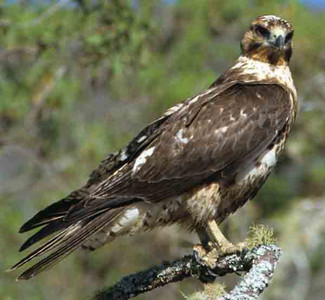
Galapagos Hawk
This Galapagos Hawk tolerated my coming within 6 feet before flying away. It is the same bird as in the preceding image. [Galapagos Islands].
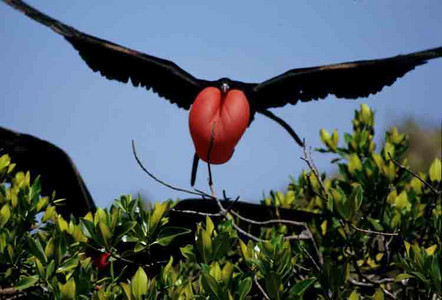
Greater Firgate Bird
In breeding season (starting in early spring on some islands and extending into early summer, on others), the adult male Greater Frigate Birds inflate their red air-sacs on their necks. These red sacs remain tightly distended, as they fly back-and-forth over the mangroves where they know the females are waiting to make their choice of a mate. When a male receives a welcoming message from a female below, he swoops down beside her. [Galapagos Islands].
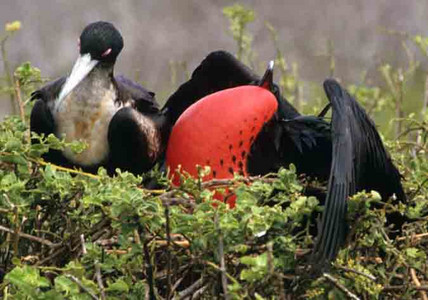
Greater Frigate Bird
This Greater Frigate Bird female (L) had signalled that she is receptive to the male (R) who now has landed alongside her with his red gular sac bulging. His odd posture and wing position is part of the courting routine. [Galapagos Islands].
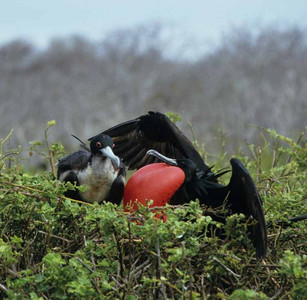
Greater Frigate Bird
The Greater Frigate Bird male, having been accepted, now shelters his mate-to-be beneath his wing to prevent the other unchosen males, still hovering above, from interfering. [Galapagos Islands].
